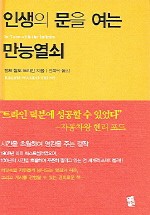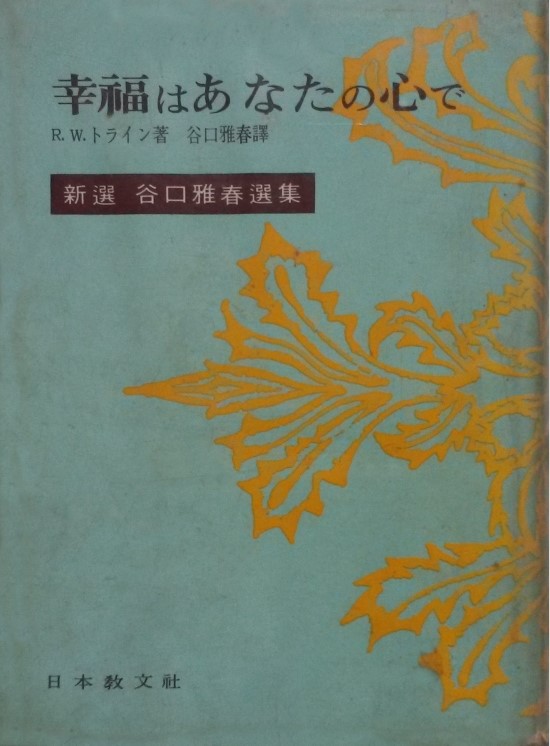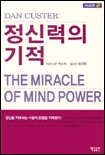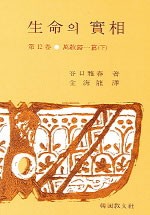광명사상이란? 뜻좀 알려주세요~급함!ㅠㅠ : 지식iN
질문
광명사상이란? 뜻좀 알려주세요~급함!ㅠㅠ
광명사상이란 것을좀 알려주세요~~
최대한 정확히좀요~~
닉네임wsk5**** 작성일2007.12.09 조회수 5,318댓글 나도 궁금해요
--
시민채택답변수 30한국사
광명사상은 우리 민족의 기원과 함께 하고 있습니다.
그만큼 그 역사가 오래되고 그 의미 또한 역사적사명을 갖고 있습니다.
아래는
월간개벽을 통하여 광명사상을 밝혀 봅니다.
‘한’의 정신
‘대한’의 참뜻을 알고자 한다면 먼저 ‘한(韓)에 담긴 비밀을 풀어야 한다. ‘한’은 ‘한민족 한겨레 한글 한복 한옥 …’ 등 우리 고유의 것을 지칭할 때 흔히 쓰는 말이다. 8·15 광복 후 초대 문교부 장관을 지냈던 안호상 씨는 ‘한’이 ‘하나’라는 뜻부터 ‘크다, 강하다, 높다, …’ 등 22가지 의미로 쓰인다는 것을 밝힌 바 있다. 이처럼 ‘한’은 실로 포괄적인 개념으로 우리의 언어와 의식, 생활문화 속에 깊숙이 스며있다.
이제 이 한의 뿌리와 정신을 찾아 역사를 거슬러 올라가 보자.
환국의 ‘환’
『삼국유사』를 보면 고기(古記)를 인용해 “먼 옛날에 환국이 있었다(昔有桓f)”고 기록한 구절이 나온다(고기는 지금은 없어진 사료이지만 일연이 삼국유사를 쓸 때만 하더라도 구해볼 수 있었던 자료였을 것이다).
최근 주목받는 도가사서 『환단고기』를 살펴보면 이 환국에 대하여 비교적 상세히 기록하고 있다. 『환단고기』 「삼성기」의 “오환건국(吾桓建國)이 최고(最古)라”(『삼성기』 상), 즉 “우리 환족의 나라 세움이 가장 오래되었노라!”고 한 당당한 선언에 비추어 본다면, 환국은 인류 시원문명의 뿌리이면서 우리 한민족 문화의 고향이라고 할 수 있다.
그런데 『환단고기』 「태백일사」의 환국본기 편을 보면, 이 ‘환’의 의미가 구체적으로 풀이되어 있다. “환은 온전한 하나[全一]이고 광명이다(桓者全一也, 光明也.)” “전일은 삼신의 지혜와 능력이요, 광명은 삼신의 참된 덕이다(全一爲三神之智能, 光明爲三神之實德)”라 하여, 환은 곧 광명을 의미하고 광명은 곧 삼신(하느님)의 참된 덕임을 밝히고 있다.
배달국과 단군조선의 광명사상
이 환국의 광명사상은 배달국에서는 ‘광명개천(光明開天)’의 건국이념으로, 단군조선시대에 이르러서는 나라의 통치체제로 이화되기 이른다.
앞서 인용한 『태백일사』 「환국본기」편에서 광명이 삼신 상제님의 참된 덕임을 부연하고 있는데, 이 가르침 그대로 단군왕검은 삼신의 덕성 ― 즉 조화신(造化神), 교화신(敎化神), 치화신(治化神) ― 을 바탕으로 조선을 진한(辰韓), 번한(番韓), 마한(馬韓)의 삼한(三韓으로 나누어 통치한 것이다(이를 삼한관경三韓管境이라 하는데, 일찍이 한말의 애국지사요 민족 사학자인 단재 신채호 선생도 삼한관경이 고조선의 국가경영원리였음을 밝혀낸 바 있다).
국호에 깃든 광명 정신
이렇듯 ‘한’의 뿌리를 통해 볼 때, 우리 선조들은 삼신상제님의 참된 덕인 광명을 추구하였으며, 나아가 통치체제로까지 구현해 광명 세계를 지상에 직접 건설하려는 뜻을 펼쳤음을 알 수 있다. 우리 선조의 이러한 광명사상은 ‘환국, 배달, (고)조선, 북부여, 고구려, 대진국, 고려, 조선, 대한민국’으로 이어지는 국통맥에 그대로 포함되어 있다.
환국은 ‘광명의 나라’, 배달국은 ‘광명이 비친 땅(밝땅→밝달→배달)’, 조선은 ‘아침의 해가 빛나는 나라’, 부여는 ‘아침의 먼동이 뿌옇게 밝아오는 나라’, 고구려는 고대광려(高大光麗) 즉 ‘높고 빛나는 나라’, 대진은 동방 진(震)자를 써서 ‘광명이 처음으로 비춰오는 나라’, 그리고 고려는 고구려의 준말이며, 마지막으로 대한민국의 한(韓)에 이르기까지 광명의 정신을 일관되게 지켜왔다.
그러면 한(韓)의 앞에 대(大) 자를 붙인 지금의 대한(大韓)이라는 국호는 어떤 의미를 갖는가?
대한의 유래와 비전
조선말 고종황제는 원구단에서 천체를 앞두고, ‘대한제국(大韓帝國)’이라는 국호를 선포하며 신하들에게 다음과 같이 말한다.
“지금 나라의 이름을 ‘대한’이라고 한다고 해서 안 될 것이 없고, 또한 매번 일찍이 보건대 여러 나라의 문헌에는 조선(朝鮮)이라고 하지 않고 ‘한’이라고 한 것으로 보아, 이전에 이미 ‘한’으로 될 징표가 있어 오늘이 있기를 기다린 것이니, 세상에 공포하지 않아도 세상에서는 모두 다 ‘대한’이라는 이름을 알 것이다.“ (고종실록 권 36, 광무원년 1897년 10월 11일조)
위 내용을 통해서도 고종이 단군조선 시대의 삼한관경제에 담긴 광명사상, 즉 ‘한’사상을 되살리고자 했던 의도를 읽을 수가 있다. 그 대한의 정신을 그대로 이어받은 것이 오늘의 대한민국이다.
우리의 국호 ‘대한민국’은 천지와 지기가 응해서, 앞으로 올 큰 운세를 따라 하늘의 뜻에 의해 지어진 이름이라 해도 과언이 아니다. 대한민국의 한(韓)에는 바로 광명을 이어받아 하늘백성으로 이룩된 대광명의 지상선경 세계를 건설하고자 하는 원대한 비전이 들어있기 때문이다.
참고문헌
『개벽 실제상황』, 『한한한의 비밀과 사명』, 『한사상의 뿌리를 찾아서』
---
한민족의 광명사상과 빛의 의미환단고기(한민족9천년 역사) 2014. 9. 12. 05:00
한민족의 광명사상과 빛의 의미

역사적으로 우리 한민족만큼 '광명'(光明)과 친근한 민족은 없을 것이다.
'백의민족'이라는 닉네임은 우리 동이족을 표현하는 가장 좋은 예일 것이다.
나라이름을 짓기에도 늘 '광명'을 사용하였다.
환국(桓國), 배달(倍達), 조선(朝鮮), 부여(夫餘), 그리고 현재의 대한민국(大韓民國), 이 모든 국호(國號)가 말호 '광명' 즉 빛을 표현한 단어들이다. 우리 민족은 늘 이 '빛'과 함께 공존하여 왔다.

우리 주변에서는 흔히 빛과 어둠이라는 두 가지 상반된 모습들을 쉽게 볼 수 있다.
동양철학에서는 '음양(陰陽)이라고 하여 빛은 양을 어둠은 음을 의미한다.
사시(四時)가 분명한 우리나라는 특히 춘분과 추분이라는 절기가 있어 빛과 어둠의 비율이 반반인 시기가 있다.
예로부터 '등하불명'(燈下不明,등잔 밑이 어둡다)이라는 말도 있어 왔다.
하지만 활동에 제약을 받게 되는 어두운 밤에는 '빛'이라는 게 없어서는 안 되는 요소이다.
몇 년전 발생한 초유의 정전사태(블랙아웃) 역시도 이러한 '빛'에 대한 소중함을 다시 한 번 일깨워주는 계기가 되었다.
사랑방에서 호롱불에 의지하면서 바느질하는 우리네 어머니의 모습에서 짙은 어둠을 밝히는 '빛'의 위대함도 같이 느끼게 된다.

'빛은 동방으로부터'라는 말이 있듯이 '빛'은 단순한 '빛'으로만 여겨지지 않는다.
고대문학과 철학, 종교 전반에 걸쳐 '빛'이 갖는 비유적 의미는 매우 광범위하다.
지상의 밝은 세계와 지하의 어두운 세계가 빛과 어둠의 대비로 표현된다.
빛은 생명의 충실, 청정함, 자유, 희망, 기쁨, 신들의 지복 세계를 나타낸다.
또한 보는 작용의 매체, 보여지는 대상, 사상의 통찰, 세계인식과 그 힘을 나타내며 신(神)적인 것의 현현, 임재이다.
빛은 종종 영적인 세계에 비유되기도 한다.
수많은 수행자들이 말하는 영의 세계는 그야말로 광명의 세계다. 영의 세계에서 영적인 존재들은 '빛'으로 자신을 드러낸다. 예수, 석가, 공자 등의 성자들 모습을 그릴때는 반드시 뒷쪽에 둥그렇게 밝은 후광(後光)을 그려 넣는다.
신(神)은 밝음 그 자체이기 때문에, 우리 민족은 예로부터 밝을 명(明)자를 덧붙여 '신명'(神明)이라고 불러왔다.
몇해전 빛보다 빠른 물질이 발견되었다고 했다가 해프닝으로 끝나버린, 언제 발견될지 아직 미지수인 빛보다 빠른 물질인 '타기온'.
빛보다 빠르다는 것이 큰 이슈가 되는 것만큼 '빛'은 비교대상에서 항상 우위를 차지하고 있다.
이런 어두운 밤을 밝히는 빛은 현대에 이르러서는 '조명'이라는 말로 대치된다.
'조명'은 단순히 어둠을 밝히는 것에 그치지 않고, 우리의 현실생활 가정, 상가, 문화공연,직장 등에서 다양한 용도에서
이용되고 있다.
우리나라 뿐만 아니라 전 세계에서 크기 사랑을 받았던 제임스 카메룬 감독의 '아바타'가 3D영화라는 이슈와 함께 대중들에게 던져준 새로운 세계는 형형색색의 화려한 색채감이었다.
유토피아라는 신세계의 이미지를 매우 효과적으로 표현했다고 할 수 있다. 그것은 앞으로 펼쳐질 조명의 세계라고 말해도 무리는 없을 것이다. 사실 요즘 조명의 대세인 LED 빛의 색깔은 친환경적이면서도 그 색상이 매우 유려하다.
그리고 건강에 도움이 되는 환경을 조명을 통해서도 가능하다는 것이다.
9천 년 전부터 대우주의 본성(本性)인 광명을 나라 이름으로 정하여 사용하여 왔던 우리 한민족.
혹자는 현대의 기준으로 구석시, 신석기, 청동기로 분류하여 역사 발전단계에서 우리 한민족이 염색기술이 부족해서 흰옷을 입었다는 무지한 소리를 하는 자들도 있다.
어떤 시인의 말처럼 "무지는 순수가 아니라, 죄악이다."라는 말이 떠올려진다.
우리 한민족은 우주의 본성인 광명사상을 생활속에서도 잊지 않고 실천하며 살아 왔던 것이다.
타고르의 '동방의 등불'은 일제강점기 당시 식민치하에 있던 한국 민족에게 큰 감동과 자긍심을 일깨워준 작품이다.
3,1운동 이후 실의에 빠져 있던 한국 민족에게 큰 격려와 위안을 주었던 시(詩)다.
일찍이 아시아의 황금시기에
빛나던 등불의 하나인 코리아
그 등불 다시 한 번 켜지는 날에
너는 동방의 밝은 빛이 되리라.
출처:
https://gdlsg.tistory.com/784 [증산도 이도경세 이의보본]
---
국호로 보는 광명 사상
짧고굵은기록
2013. 4. 7. 16:50
https://blog.naver.com/kctjpark/60189536783
예로부터 우리 나라 국호에는 모두 광명 사상이 담겨 있다. 하나씩 보면 다음과 같다.
환국: 환한 광명의 나라
배달국: 밝달 -하늘의 광명이 비친 나라
(고)조선: 조일선명(朝日鮮明) -아침에 태양이 선명하게 밝아 온다
부여: 아침에 먼동이 뿌옇게 밝아 온다
고구려: 고대광려(高大光麗) -높고 크게 빛난다
대진국: 동방 '진(震)' -태양이 동쪽에서 밝아 온다
발해: 불해 -불의 바다, 광명의 바다
고려: 고구려의 준말
조선: 조일선명(朝日鮮明)
대한민국: '한(韓)'에 광명의 뜻이 있다
환(桓)은 하늘의 광명을 뜻하고, 단(檀)은 땅의 광명을 뜻하며, 한(韓)은 천지의 광명을 실현하는
역사의 주체를 의미한다고 한다. 이런 광명 사상이 우연은 아닐 것이다. 빛의 의미를 종교적으로 풀이하면 루시퍼가 될 수도 있다.
루시퍼를 사탄과 동일 인물로 간주하는 사람도 있지만 여호와, 루시퍼, 그리고 사탄은 서로 다른 존재로 알려졌다. 루시퍼는 인류 창조의 주체지만 사탄은 그 위험성을 들어 반대한 그룹의 수장이라는 것이다. 여호와는 그들 모두를 아우르는 존재라고 할 수 있다. 그들은 인간 창조의 시기에 인간에 대한 서로 다른 의견을 가진 갈등의 주체였고, 물(노아의 홍수)로써, 또는 불(소돔과 고모라)로써 인간을 대상으로 한 원죄를 심판하거나 보호하려 했던 그들 간의 역사가 성경에도
기록되어 있다. 그러나 지금은 인간이 스스로 깨우치고 진화하여 우주의 일원이 될 수 있도록 각각 다른 역할(정-반-합)로써 배후에서만 인간의 자각을 돕고 있다고 한다.
새로운 세상(NWO, 후천 개벽, 용화 세계, 의식 상승, 지축 정립, 종말론 등)에 대한 예언들은 예
로부터 수 없이 많지만 그것이 언제 어떻게 이루어진다는 것은 감추어져 있거나 추상적으로 서
술되어 있다. 즉, 힌트만 주어서 경고하거나 인간의 의식을 유도하기만 하였지 구체적으로 가르
쳐 주지는 않았다. 그것은 인간 스스로 그 의미를 알게 되는 과학적이고 합리적인 사고를 가지게 될 때(아포칼립스 시대, 현재)를 대비하였다는 것이다.
1945년 히로시마와 나가사키의 원자탄 투하를 그들은 성경에서 666으로 예언하였다. 악마의 숫
자 666은 아담 이후 666 세대가 지나서 지구 뿐만 아니라 우주를 뒤흔들 수도 있는 핵의 무기화
를 상징한 것이라고 한다. 그들은 그들이 만든 인간의 악성을 알고 있었던 것이다.
그러나, 그것은 인간을 잘 아는 그들이 숨기고 대비해 온 방법으로 스스로 통제되어 결국 지구
를, 악을 경험한 후의 선함으로 가득 찬 파라다이스로 건설하는 것이 우리가 신으로 알고 있는
그 창조자들의 시나리오가 아닐까? 그 계획이 우리의 국호에도 숨어 있는 것이다.
---
인산선생의 광명사상
마음을 닦으면 정신이 맑아지는데
정신의 맑아짐을 순조롭게 성취하기 위해선 단전호흡을 통해
광명(光命)을 이루는 노력을 해야한다.
정신은 물〔水精〕이고 마음은 불〔火神〕이므로
1백도(度)의 불에
36도의 물기운〔水氣〕이 들어오면 심장(心臟)에서 광명이 이뤄진다.
공기 중의 물과 불이 마찰하면 화(火)의 붉은 색 속에서 선(線)이 나오는데
이를 광선(光線)이라고 한다.
광(光)은 수기(水氣)가 들어오면 명(明)으로 화(化)한다.
우주의 명(明)과 정신의 명(明)이 하나로 되는 것이 선의 완성인데
이를 대각(大覺)이라고 한다.
단전호흡을 오래하면 되게 마음의 밝음〔明〕을 이룬다.
예를 들어 새끼 잉어가 명(明)을 이루고 조화무쌍한 용(龍)으로
화(化)하는 것도 잘 관찰해 보면 조식법(調息法)
즉 단전호흡을 통해서라는 것을 알 수 있게 된다.
또 그것은 결국 공간(空間)의 색소중(色素中)에 광명을 이루는 원료가
있다는 사실을 반증한다.
광명을 이루는 색소는 적색소(赤色素)이다.
적색소에서 화기(火氣)는 화광(火光)을 이룬다.
화광(火光)을 이루는 이유는 불속에 물이 있기 때문이다.
불속에 있는 물〔火中之水〕이 외부의 물과 합해질
때
불은 광선(光線)으로 독립하고 물은 수명(水明)으로 독립한다.
수극화(水剋火)의 원리에 따라 불의 열기(熱氣)는 물의 냉기(冷氣)에,
불의 광선(光線)은 물의 수명(水明)에 각각 밀려나게 된다.
이에 따라 수명(水明)의 명(明)만 남아서 공간의 광명세계를 이룬다.
광명은 있되 뜨거움이 없는 것은 불기운이 물기운의 힘에 밀려
약화되었기 때문이다.
그러나 돋보기로 광선을 모으면 뜨거워지는 것으로 볼
때
불기운이 전혀 없어지는 것은 아니라는 사실을 알 수 있다.
우리가 호흡을 통해서 받아들이는 밝음〔明〕의 원료는
공기 속의 물과 물속의 불이다.
이 원료들이 체내에 들어와 폐선(肺線)에 이르면 색소는
색별(色別)로 나뉘어져 각각 해당 장부(臟腑)로 귀속된다.
즉 적색소(赤色素)는 심장, 흑색소(黑色素)는 콩팥, 백색소(白色素)는 폐,
청색소(靑色素)는 간, 황색소(黃色素)는 비위(脾胃)계통으로 들어간다.
밝음이 이루어지는 과정을 좀더 구체적으로 살펴보면
성령정기신(性靈精氣神)의 명(明)에 이른다.
화기(火氣)
1백도 중에 수기(水氣)
3
6도가 들어올
때
적색소〔불〕는 신(神)으로 화(化)하고
수기(水氣)
1백도 중에 화기
3
6도가 들어올
때
흑색소〔물〕는 정(精)으로 화한다.
토기(土氣)
1백도 중에 목기(木氣)
3
6도가 들어올
때
황색소〔土〕는 영(靈)으로 화하고
목기
1백도 중에 금기(金氣)
3
6도가 들어올
때
청색소〔木〕는 성(性)으로 화하며
금기
1백도 중에 화기
3
6도가 들어올
때
백색소〔金〕는 기(氣)로 화한다.
정(精)은 생명을 유지시켜주는 원동력이다.
옛 글에
“영(靈)을 머금은 모든 생물은 다 깨달음의 속성(본질)을 지니고 있다”
한 것은 영(靈)과 성(性), 정(精)과 신(神)이 모두 불가분의 관계에 있음을
설명해 준다.
단전호흡을 통해 이러한 밝음을 이룰 수 있는 요소인 성령정기신의
원료(청ㆍ황ㆍ흑ㆍ백ㆍ적색소)를 체내에서 증장(增長)시킴에 따라
광명을 이루어 마침내 대각(大覺)에 이르게 된다.
영명(靈明)ㆍ신명(神明)ㆍ성명(性明)ㆍ정명(精明)ㆍ기명(氣明)으로
대명(大明)을 이루기 때문이다.
이것이 바로 단전호흡을 이룩하는 참선의 묘용(妙用)이다.
참선의 방법이 올바른 길로 들어서게 되면 건강과 밝음을 성취하나
그렇지 못하면 건강과 함께 밝음의 성취의 꿈도 무산되어 버리고 만다.
참선시 호흡 실조(失調), 냉처기거(冷處起居), 자세 부정(不正)
등
몇 가지 부주의로 오는 대표적인 질병은 중풍(中風)이다. 10분의 7에 해당하는 것이 중풍이고 나머지 3은 암이다.
암이 오는 확률이 이토록 높은 것은 호흡 실조와 자세 부정의 상태에서
오랜 시간 움직이지 않고 있음으로써 수명골(壽命骨)이 제자리를 이탈,
골수(骨髓)가 온몸에 골고루 유통되지 못하기 때문이다.
 추천 도서
추천 도서 
 https://blog.naver.com/haeil0308/220059855922
https://blog.naver.com/haeil0308/220059855922

 추천 도서
추천 도서 
 https://blog.naver.com/haeil0308/220050262328
https://blog.naver.com/haeil0308/220050262328

 추천 도서
추천 도서 
 https://blog.naver.com/haeil0308/220047945813
https://blog.naver.com/haeil0308/220047945813

























